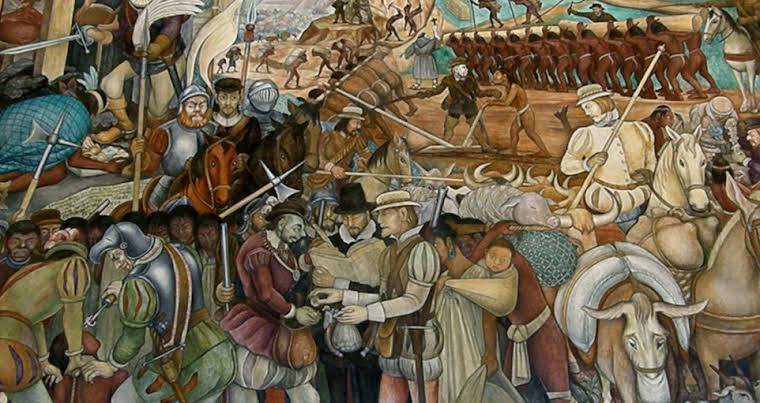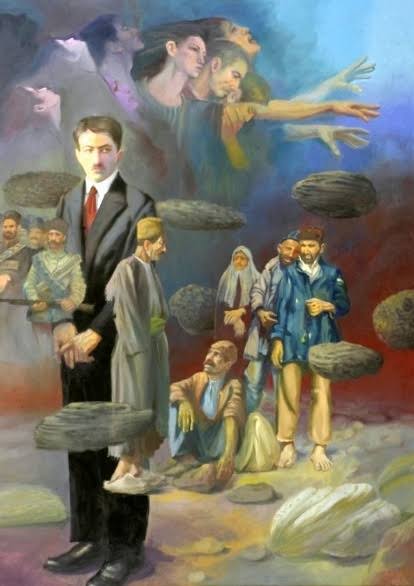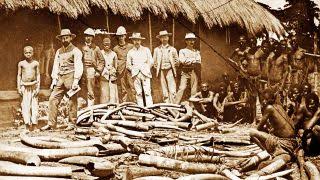
One of our professors at the University not only asks us to find our roots but also lends a helping hand in our pursuit of Indigenization and Decolonisation. By de-linking ourselves from the West and finding our roots, he doesn't mean at all to go back to the old times and adopt the medieval lifestyle. Certainly not. What he actually means is what Ehsan Shariati has rightly said, "a new beginning, and a different start." But some students still think that our professor is too much obsessed with the Decolonial theory. Well it's not a matter of obsession. If they knew the importance of this theory, especially having a colonial past, they would never say so.
Moreover, I believe that all the queries related to this theory are genuine. And the Decolonial thinkers aroud the globe are doing their damnedest to answer all the queries. As far as my interaction is concerned, I find them saying that this theory has lost its relevance. Now we should move forward. But ironically, they are the same people who see the Neo-Colonial structure of Pakistan and curse it.
In order to know why Decolonial studies are necessary or what actually happens in a Westernized society, the reading of Sadegh Hedayat's magnum opus The Blind owl becomes essential.
Sadegh Hedayat is considered as one of the greatest Twentieth-Century novelists of Iran. He shares his writing style with other Twentieth-Century novelists like James Joyce, Virginia Woolf, Doris Lessing and E.M Foster etc. Natural enough, Sadegh Hedayat's stories are extremely influenced from the circumstances. He lived during the period of a tyrant dictator Reza shah who emphasized on the Westernisation of Iran without apprehending the long Islamic and traditional history of Iran. Instead of making it compatible with the traditional values, he preferred to thoroughly impose the Western modernity on the people which not only led down the country morally and spiritually but also politically and economically. Sadegh Hedayat himself committed suicide facing the bad socio-economic condition. The Blind Owl was written under these political kerfuffles. It was first published in Bombay (1936).
The story of The Blind Owl unfolds in three parts. So the cohesion and structure of this novella is quite complex. It has a resemblance with Kafka's Metamorphosis, Albert Camus' The Stranger and Sartre's Nausea. Not in terms of the plot but in terms of the philosophy which is of course Existentialism. And Sadegh Hedayat himself was inspired from these existentialist writers in his lifetime.
In the first part of the Novella, the narrator, a pen-case painter, wishes to find his own self, his roots, the purpose of his existence. As he says, "Ever since I broke the last ties which hold me to the rest of mankind my one desire has been to attain a better knowledge of myself." Now the questions of who am i? Who are we? gives us the indication that the narrator is facing the identity crisis. As we all know that these questions born when the indigenous culture is destroyed by the colonial powers. Although Iran has never been a colony of any Western Empire. Rather it has been a victim of Imperialism. We are also well aware of the fact that how West influenced the local cultures with the help of so-called modernity. (On a side note, Edward said's Culture and Imperialism is an important read in this regard) This book not only finds a connection between Culture and Imperialism but also exposes the dominance of West and its exploitation of Non-Western people. Here one can question that even in the European countries people are doubting their identities, facing the existential crises and producing the absurdist literature. The answer of this question is that the psychology of their problems is different from us. They are fed up with the wars and the materialistic orientation of their societies. But our identity, as Ali Shariati says, is ingrained in our religion. A religion which is Divinely- Oriented not Divinely-Imitative.
In the second part of the Novella, the protagonist sketches the portrait of a nameless ethereal girl who comes in his life as a falling star. As he says, "In this mean world of wretchedness and misery I thought that for a ray of sunlight had broken upon my life. Alas, it was not sunlight, but a passing gleam, a falling star, which flashed upon me, in the form of a woman – or of an angel." And to his surprise, on the day of Nawruz, upon the arrival of his uncle, he sees through the hole of the wall the girl he has always painted. He searches for her. And on one night she comes at his doorstep and goes straight to his bed and lay down there. As if she surrenders herself to him. As he says, "She had come to my room and had surrendered her cold body and her shadow to me in order that no one else should see her, in order that she should not be defiled by a stranger's glance." He then tries to resuscitate her but all in vain. He thinks to paint her but couldn't actually remember her features. All of a sudden, she opens her eyes for quite sometime and the painter quicky notices her expression.
He then thinks that this dead body is of no use for him. He prepares the body for burial by cutting its body parts and put them into a suitcase. With the help of the grave-digger, he takes the body in the vicinity of the shrine of Abdol-Azam, a mosque and cementry situated among the ruins of Ray. While digging the grave, the old-man finds an ancient clay pot and hands it over to the painter. He takes the clay pot, wrapped in a dirty kerchief, to his house and on reaching his house, to his surprise, he finds that the portrait on the ancient clay pot is a replication of the painting he has made. Now here we can say, with the reference of the shrine of Abdol-Azim and the discovery of the ancient clay pot with the same portrait on it as sketched by the painter who is a flag bearer of modernity, that Hedayat is trying to inculcate that it is not necessary to break off with the past or traditional values as it has been perceived by the Western enlightenment.
In the last and third part of the Novella, the narrator awakes from a deep sleep and finds himself surrounded by blood. He first thinks to commit suicide and then changes his mind. In this part, he lives in a busy city but in complete isolation from the people around him like the loneliness of Gregor of Metamorphosis. The narrator presents himself as a young man who is married to an arrogant woman who keeps him away from any conjugal intimacy. The clay pot and the character of his wife can be interpreted as a tussle between Civilisation and Modernism. There is a reference in the second part that supports my argument when the protagonist unintentionally breaks the pot while "achieving" his wife's body. The novel ends when, after a lot of frustration, he stiches the knife into her wife's body and runs away carrying the "ancient pot" under his arm.
Moreover, I believe that all the queries related to this theory are genuine. And the Decolonial thinkers aroud the globe are doing their damnedest to answer all the queries. As far as my interaction is concerned, I find them saying that this theory has lost its relevance. Now we should move forward. But ironically, they are the same people who see the Neo-Colonial structure of Pakistan and curse it.
In order to know why Decolonial studies are necessary or what actually happens in a Westernized society, the reading of Sadegh Hedayat's magnum opus The Blind owl becomes essential.
Sadegh Hedayat is considered as one of the greatest Twentieth-Century novelists of Iran. He shares his writing style with other Twentieth-Century novelists like James Joyce, Virginia Woolf, Doris Lessing and E.M Foster etc. Natural enough, Sadegh Hedayat's stories are extremely influenced from the circumstances. He lived during the period of a tyrant dictator Reza shah who emphasized on the Westernisation of Iran without apprehending the long Islamic and traditional history of Iran. Instead of making it compatible with the traditional values, he preferred to thoroughly impose the Western modernity on the people which not only led down the country morally and spiritually but also politically and economically. Sadegh Hedayat himself committed suicide facing the bad socio-economic condition. The Blind Owl was written under these political kerfuffles. It was first published in Bombay (1936).

The story of The Blind Owl unfolds in three parts. So the cohesion and structure of this novella is quite complex. It has a resemblance with Kafka's Metamorphosis, Albert Camus' The Stranger and Sartre's Nausea. Not in terms of the plot but in terms of the philosophy which is of course Existentialism. And Sadegh Hedayat himself was inspired from these existentialist writers in his lifetime.
In the first part of the Novella, the narrator, a pen-case painter, wishes to find his own self, his roots, the purpose of his existence. As he says, "Ever since I broke the last ties which hold me to the rest of mankind my one desire has been to attain a better knowledge of myself." Now the questions of who am i? Who are we? gives us the indication that the narrator is facing the identity crisis. As we all know that these questions born when the indigenous culture is destroyed by the colonial powers. Although Iran has never been a colony of any Western Empire. Rather it has been a victim of Imperialism. We are also well aware of the fact that how West influenced the local cultures with the help of so-called modernity. (On a side note, Edward said's Culture and Imperialism is an important read in this regard) This book not only finds a connection between Culture and Imperialism but also exposes the dominance of West and its exploitation of Non-Western people. Here one can question that even in the European countries people are doubting their identities, facing the existential crises and producing the absurdist literature. The answer of this question is that the psychology of their problems is different from us. They are fed up with the wars and the materialistic orientation of their societies. But our identity, as Ali Shariati says, is ingrained in our religion. A religion which is Divinely- Oriented not Divinely-Imitative.

In the second part of the Novella, the protagonist sketches the portrait of a nameless ethereal girl who comes in his life as a falling star. As he says, "In this mean world of wretchedness and misery I thought that for a ray of sunlight had broken upon my life. Alas, it was not sunlight, but a passing gleam, a falling star, which flashed upon me, in the form of a woman – or of an angel." And to his surprise, on the day of Nawruz, upon the arrival of his uncle, he sees through the hole of the wall the girl he has always painted. He searches for her. And on one night she comes at his doorstep and goes straight to his bed and lay down there. As if she surrenders herself to him. As he says, "She had come to my room and had surrendered her cold body and her shadow to me in order that no one else should see her, in order that she should not be defiled by a stranger's glance." He then tries to resuscitate her but all in vain. He thinks to paint her but couldn't actually remember her features. All of a sudden, she opens her eyes for quite sometime and the painter quicky notices her expression.
He then thinks that this dead body is of no use for him. He prepares the body for burial by cutting its body parts and put them into a suitcase. With the help of the grave-digger, he takes the body in the vicinity of the shrine of Abdol-Azam, a mosque and cementry situated among the ruins of Ray. While digging the grave, the old-man finds an ancient clay pot and hands it over to the painter. He takes the clay pot, wrapped in a dirty kerchief, to his house and on reaching his house, to his surprise, he finds that the portrait on the ancient clay pot is a replication of the painting he has made. Now here we can say, with the reference of the shrine of Abdol-Azim and the discovery of the ancient clay pot with the same portrait on it as sketched by the painter who is a flag bearer of modernity, that Hedayat is trying to inculcate that it is not necessary to break off with the past or traditional values as it has been perceived by the Western enlightenment.
In the last and third part of the Novella, the narrator awakes from a deep sleep and finds himself surrounded by blood. He first thinks to commit suicide and then changes his mind. In this part, he lives in a busy city but in complete isolation from the people around him like the loneliness of Gregor of Metamorphosis. The narrator presents himself as a young man who is married to an arrogant woman who keeps him away from any conjugal intimacy. The clay pot and the character of his wife can be interpreted as a tussle between Civilisation and Modernism. There is a reference in the second part that supports my argument when the protagonist unintentionally breaks the pot while "achieving" his wife's body. The novel ends when, after a lot of frustration, he stiches the knife into her wife's body and runs away carrying the "ancient pot" under his arm.
